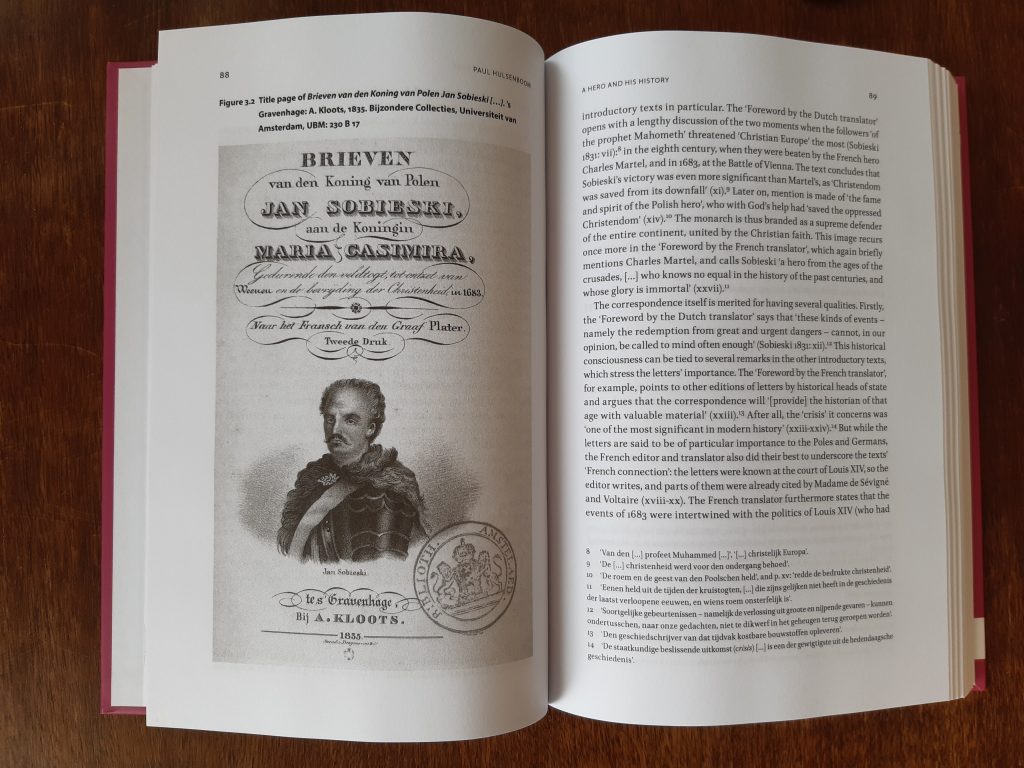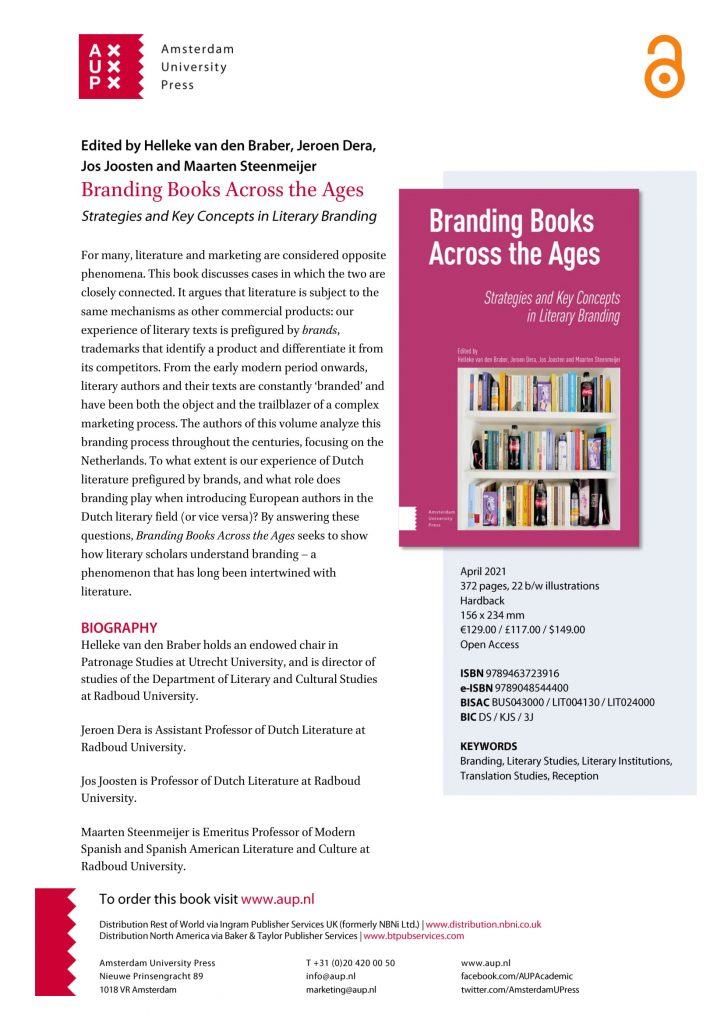“Every civilized Dutchman who has studied modern history, even if only in general terms, knows the brave Jan Sobieski.” These words come from a book review from 1832, discussing the recent publication of the letters of Jan III Sobieski (1629-1696), in Dutch translation. The review illustrates how famous the former Polish king was in the Northern Netherlands, even more than a century after his death.

I have previously written about Sobieski’s Dutch reception in the late seventeenth century, prior to his acclaimed victory at the Battle of Vienna, in 1683. In a new publication, entitled ‘A Hero and His History. The Branding of Jan III Sobieski and His Letters in the Northern Netherlands during the Early Nineteenth Century’, I explore a related topic, venturing out of the early modern period. In the late 1820s and early 1830s, Europe saw the appearance of several editions of Sobieski’s correspondence. Three Dutch editions were published in The Hague. My publiation analyses the ways in which Sobieski and his letters were branded in these Dutch editions, particularly in the books’ extensive front matter. It argues that, while the Dutch branding was directly inspired by earlier French and Polish versions, the motives behind these different editions varied greatly, depending on their contexts. Of key importance were events related to Polish patriotism, such as the November Uprising. A number of reviews furthermore make clear how the brands in the Dutch editions were received.
My research has resulted in a book chapter, which has now appeared in H. van den Braber, J. Dera, J. Joosten and M. Steenmeijer (eds.), Branding Books Across the Ages. Strategies and Key Concepts in Literary Branding (Amsterdam: Amsterdam University Press 2021). You can find the Open Access publication on the publisher’s website.
